The Bagpipe Society
Bagpipe Icongraphy from Italy

It is a pleasure for me to write some words about our Facebook group “Iconografia della cornamusa in Italia”1 and I am very happy to share this work with English and worldwide friends. The project started in June 2018 driven by the idea to fill a gap on the research into Italian bagpipes, especially in the field of iconographical evidence. Previous projects from other countries taught me a lot about the importance of this kind of research so, first of all, I would like to thank Catherine and Jean-Luc Matte for their inspiration and their great work on bagpipe iconography in France2, Aron Garceau for his well-known web page3 and Pete Stewart and Julian Goodacre for their wonderful project “The Bagpipe Map”4.
The welcome to “Iconografia della cornamusa in Italia” was warm right from the beginning so I am very pleased to say that this is not only my work but also nice teamwork. For this reason, I would like to thank all the group members and especially Loris Niero, Giuliano Grasso, Giorgio Pinai, Davide Baglietto, Ermanno Pinna, Giovanni Sartori and Goffredo degli Esposti for all their contributions.
Since the group’s birth, we have collected more or less 500 Italian artworks in which we can identify bagpipes so it is not possible to write about all of these. In this article, I will try to summarise this large quantity around few topics. Some sound links (A-E) will appear along the text and there are links to follow to a soundtrack which can be played whilst reading.
1. MIDDLE AGES

As we know very well, the word “Middle Ages” means almost nothing from a historical point of view. It is 1000 years of European history from the fall of the Western Roman Empire to Christopher Columbus and it contains a huge number of changes in philosophy, religion, technical knowledge, fashion, music, literature, art and so on. I will use this macro category only to give a first glance on this subject without claiming to be exhaustive.
First Evidence
The very first iconographic evidence in Italy of a musical instrument equipped with a bag comes from the scriptorium of San Benedetto in Polirone near Mantua. Founded in the 11th century, in its day it was the most important monastery in northern Italy. One of its most precious manuscripts is Ms. 340 of the Biblioteca Teresiana of Mantua, the astonishing Psalterium Davidicum from the 12th century. The first illumination, at folio 1v, depicts King David surrounded by his musicians (Fig. 1) and one of these plays a sort of bagpipe (Fig. 2). It is very difficult to understand which type of instrument it is but we can see distinctly a blowpipe, a bag and a chanter.

Did the miniaturist see a real bagpipe around the monastery to paint it? It is impossible to know for sure and maybe he did not see any real bagpipe. The painting style recalls Byzantine models and it is possible that painter was inspired by a previous illumination seen in eastern codices. Further, at the moment, we do not have other evidence until the beginning of 14th century. A 200 year gap is huge and, in my opinion, it means either there were not so many bagpipes in Italy at this time or they were not yet considered as a subject for painting.
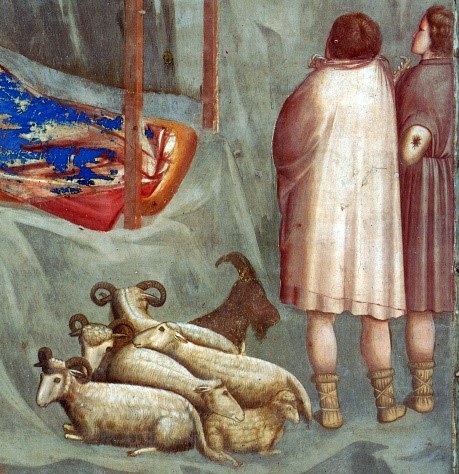
Given all of this, we can go to the second “first” evidence of the flowering of bagpipe iconography in Italy. In the city of Padua is one of the most amazing medieval masterpieces, the Scrovegni Chapel. Architecturally simple, it is entirely adorned with frescoes painted by Giotto di Bondone between 1303 and 1305 AD.
On the south wall, there is a Nativity and here we can see an angel announcing the birth of Christ (Fig. 3) to a couple of shepherds and one of them holds in his arm a little bagpipe (Fig. 4). A blowpipe is clearly visible over the shepherd left shoulder and a knot ties the rear of the bag (Fig. 5), as it is possible to see also nowadays when makers use a whole sheepskin or goatskin for the bag.
A Brief Overview from 12thC to 1492AD
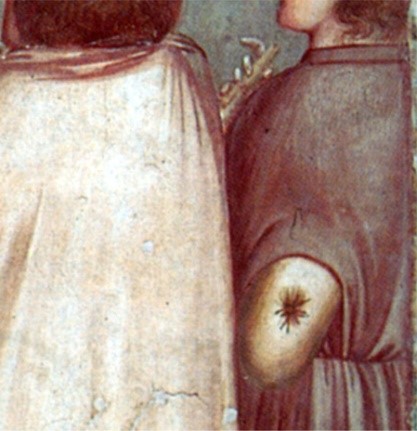
The painting by Giotto di Bondone ushered in the golden age of bagpipe iconography in Italy and maybe this abundance reflects an increasing presence of bagpipes in the everyday life of our predecessors. By now, we have collected more or less 170 artworks from the medieval period and it would be difficult to describe them in detail so I prefer to provide you with a brief chart. Roughly, we can classify all artworks in four types of subjects:
- Musical Angels
- Shepherds (annunciation or adoration)
- Scenes of everyday life (dances, weddings, noble gatherings)
- Devils
| Subject | Cases | Withdout Drone | One Drone |
|---|---|---|---|
| Shepherds | 47% | 46% | 54% |
| Musical Angels | 40% | 5% | 95% |
| Scenes of everyday life | 12% | 18% | 82% |
| Devils | 1% | 0% | 100% |
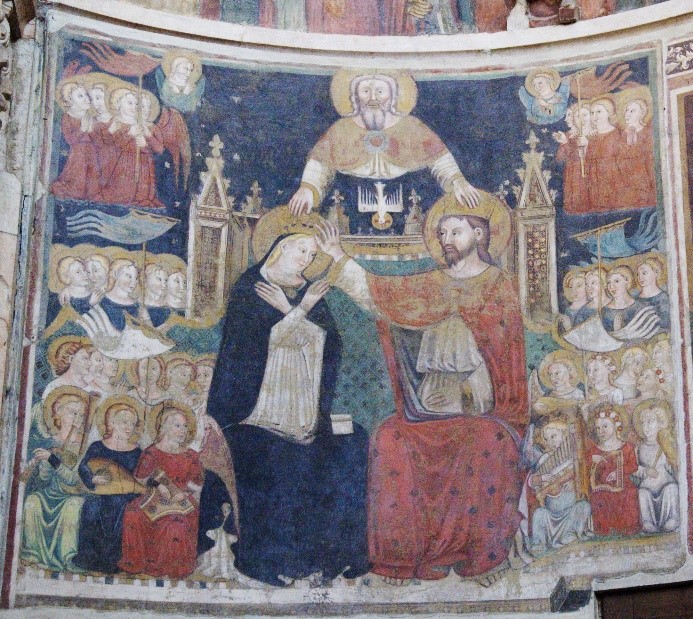
With regards to this chart, I would like to say some words about drones and share a couple of conjectures. It seems logical to think about bagpipe development in terms of gradual additions from a chanter, then a bag, then one drone, then two drones and so on. It is quite difficult to say for sure and, whilst possible, more research is required. The first Italian painting of a bagpipe with a drone is about thirty years later than Giotto’s Nativity. In the Baptistery of Parma there is a Coronation of the Virgin (Fig. 6), dated around 1330 AD, where an angel plays a bagpipe with a clearly visible drone on the left shoulder (Fig. 7). It is the earliest depiction of a bagpipe with a drone in Italy and no second drones appear until the end of the Middle Ages.
The second conjecture starts from Table 1. As you can see, humble shepherds play equally instruments with or without drone, half-and-half. Instead, noble angels almost always play bagpipes with one drone. It could be possible that instruments with drone were played mainly by professional musicians for art music and maybe bagpipes without drone were mainly folk instruments.
Musical Angels
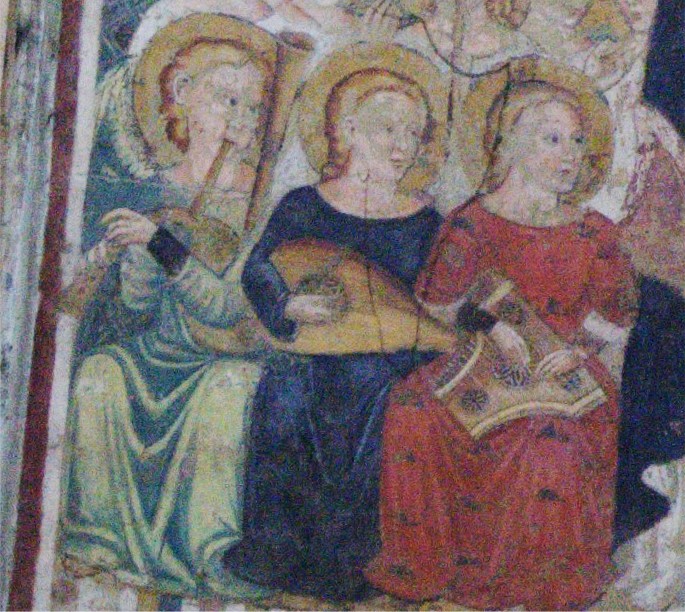
As we can see from Table 1, presence of angelic bagpipers is huge in Italian iconography from 14th to 15th century. Over the next centuries, the evidence become rarer until an almost complete disappearance. These medieval art pieces are glorious and they prompt me to think that probably, during these centuries, the bagpipes reached their highest reputation level in Italy. They were considered a suitable instrument for angels in praise of Jesus Christ and the Virgin Mary.
Most of these artworks are Assumption/Coronation of the Virgin, Virgin and Child or Christ in Glory scenes where a host of angels surrounds the main figures.
To understand this musical symbolism and its high value it is necessary to introduce the primary source for medieval angelology: St. Dionysius and its De coelesti hierarchia (Heavenly Hierarchy). This treatise was very influential in medieval thought. St. Dionysius taught that angels were divided into three hierarchies, each of which contained three orders. Each order formed a circle around God so he is surrounded by nine concentric circles of angels. Their names are Seraphim, Cherubim, Thrones, Dominations, Virtues, Powers, Principalities, Archangels and Angels. The knowledge of God descends along this stairway and every order participate according to its degree, from the most perfect Seraphim (established immediately around God) to the Angels in the strict sense (in contact with the Earth). St. Dionysius reveals us the link between angels and music, teaching that all the hierarchies sing eternally in praise of God and tells us: “The theology has transmitted to humankind the hymns sung by these celestial Minds and the source that spreads over them the most excellent splendour: indeed, some of these angels, to speak after sensible perception, proclaim as a voice of many waters: “Blessed is the glory of the Lord from His place” and others sing that renowned and most august hymn of God, “Holy, Holy, Holy, Lord of Sabaoth, the whole earth is full of His glory.””5
Track A: Two Voices Sanctus - Ensemble Organum
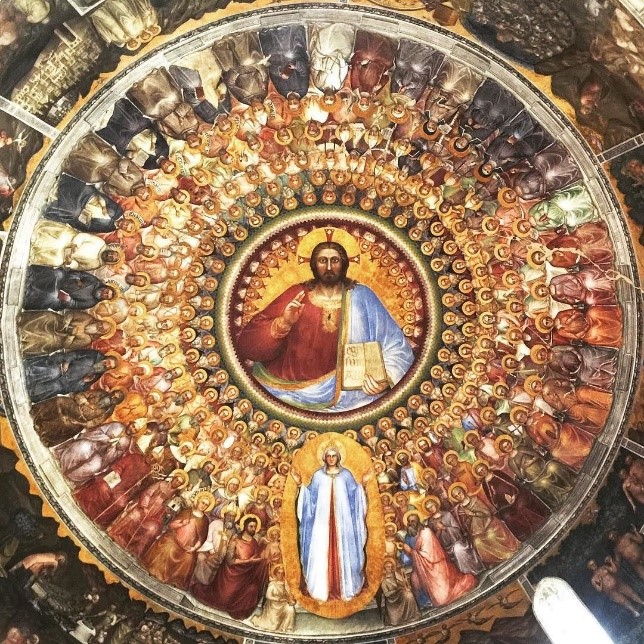
At the beginning of 14th century, Dante gathers all these teachings in The Divine Comedy giving us other clues about music and angels. He blends Heavenly Hierarchy, cosmology and musica mundana (music of the spheres) revealing the harmonic connections between Heaven and Universe.
Dante describes the Heavenly Hierarchy following accurately the teachings of St. Dionysius that we have already learnt, so we can introduce now Dante’s cosmology.
The astronomical system of the Middle Ages was the Ptolemaic system formulated by the Alexandrian mathematician Ptolemy around 2nd century AD and Dante describes it exactly in the Paradiso. The Earth is stationary at the centre of the universe and nine spheres surround it: Moon, Mercury, Venus, Sun, Mars, Jupiter, Saturn, Fixed Stars and Primum Mobile.
As we can see, nine are the orders of angels as nine are the spheres of Ptolemy around the Earth. Dante clarifies this perfect symmetry in Paradiso, where he explains that every angelic order presides over a single cosmic sphere causing and preserving their regular movements (Seraphim/Primum Mobile, Cherubim/Fixed Stars, Thrones/Saturn and so on).
“Lo moto e la virtù d’i santi giri, come dal fabbro l’arte del martello, da’ beati motor convien che spiri,”6
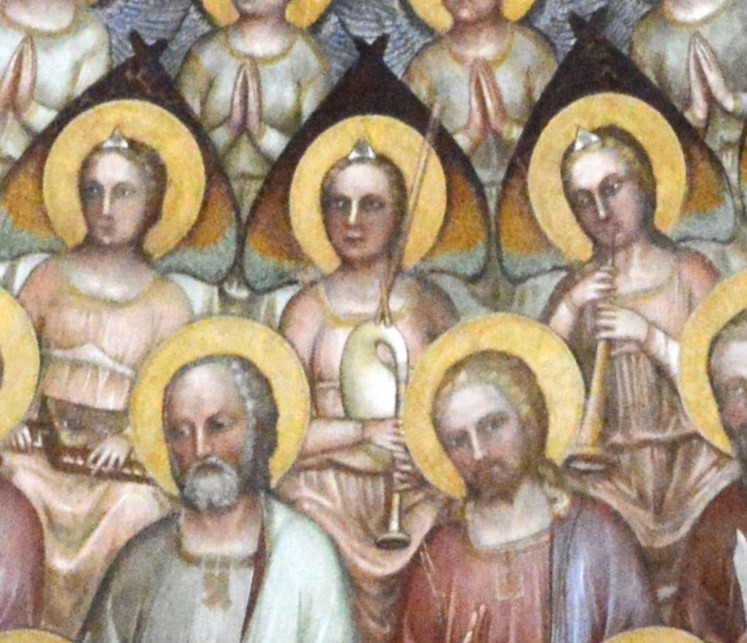
Now the last piece of our musical puzzle: musica mundana or music of the spheres. This is an ancient Greek philosophical concept passed by Boethius to the medieval knowledge. In his treatise De Institutione Musica (6th century AD), Boethius teaches that while the planets make their revolutions around the earth they produce a sound. The pitch derives from the speed and planets move faster as their distance from the Earth increases. Therefore, the Moon produces the lowest sound, Mercury a step higher and so on.
Dante embraces this knowledge in his Divine Comedy as he writes:
“Quando la rota, che tu sempiterni Desiderato, a sé mi fece atteso, Con l’armonia che temperi e discerni,”7
What a vertiginous sight was in front of our medieval ancestors! Heaven and the entire Universe as a great musical instrument able to spread its harmony from the highest celestial Minds to the Earth and played by the infinite perfection of “the Love which moves the sun and the other stars.”8

I hope that this digression may help to understand better what messages can send us these medieval artworks and what privilege to see all these bagpipes on them.
Shepherds: As we can see from Tab. 1, shepherds are the most painted subject of Italian iconography and, as we already know, the Scrovegni Nativity (Fig. 3) is the first bagpipe evidence of that type. This artistic topic is a very ancient one and originates from Luke 2, 8-20, where a host of angels appear to the shepherds and invite them to go to Bethlehem to praise the newborn child, the Saviour. Thanks to St. Dionysius and Dante we can understand this episode and how music is involved. Angels preside over the Moon sphere, the nearest to the Earth, and for this reason they have the task to get in touch with humankind. Moreover, they encourage the shepherd singing and teaching them the heavenly hymn “Glory to God in the highest and on earth peace to those on whom his favour rests.” In this way, the shepherds, the humblest, become the first to take part in the divine plan connecting musically themselves to the Heavenly Hierarchy. Track B. Gloria, spiritus et alme - Ensemble Gilles Bincois.
Before Giotto, Nativities were highly hieratic and strictly inspired by Byzantine art. Shepherds did not have musical instruments (Fig. 12) or they were secondary to other aspects (Fig. 13). After Giotto, a more realistic style takes place and slowly bagpipes become an instrument almost inseparable from the shepherds (Fig. 14). However, the arrival of bagpipes in depictions after 1300 AD does not necessarily means that there were no bagpipes before this date, it means that bagpipes were not yet an element of the pictorial language.
Scenes of Everyday Life

Besides the huge heritage of sacred iconography, there are a few representations of bagpipes in scenes of everyday life. The evidence is scarce but what does exist could give us some information about the use of bagpipes, their context and their association with other instruments.
An interesting and rare depiction is a 15th century pettenella that comes from the city of Udine in northern Italy (Fig. 15)9. A pettenella is a small painted board used to cover and decorate the joints between beams of wooden roofs. This one was found in the house of Vanni degli Onesti family, together with other 97 pettenelle. Vanni degli Onesti was a noble family and the images painted on these boards are mostly courtly scenes with jousting knights, lovers, musicians and dancers. In Fig. 15, we can see a couple of musicians playing bagpipe and shawm and, in observing Italian iconography, this duo seems the most common in everyday medieval pipe music.
When more musicians are involved, it is easy to find a specific and recurring ensemble, generally a trio, made up of a bagpipe and two shawms, one with a flared bell and the other one with a barrel bell.
Just a couple of images to illustrate this trio: the first illumination (Fig. 16) comes from Tacuinum sanitatis, (Track C: Bellicha - Ensemble Unicorn) a north Italian manuscript from the end of 14th century, now archived at Austrian National Library in Vienna as manuscript Cod. Ser. N. 2644. It is a handbook on medicine and health. These lavishly pictured Tacuina spread in Italy at the end of 14th century among the upper aristocracy. They go back to an Arab source entitled Taqwīm as‑Siḥḥa and written by Ibn Buṭlān, a Nestorian Christian physician who was active in Baghdad in the 11th century. Between many good habits for healthy life, the author recommends to “Sonare et balare” (playing and dancing) and the picture at folio 104r portrays this characteristic musical trio (Fig. 17).
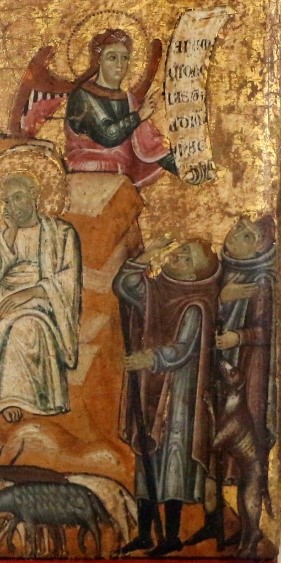
The second example comes from Le Croniche written by Giovanni Sercambi from Lucca who wrote a history of his city. The 14th century manuscript is archived at Archivio di Stato di Lucca as Ms 107. The illumination at folio 134r depicts a ceremony giving accolade to the Pisan knight Iacopo d’Appiano (Fig. 18). At the right side, we can recognise our trio with their particular barrel bell shawm (Fig. 19). It would be interesting to carry on further investigations about these ensembles and luckily, I know that Raffaella Bortolini, a talented early music performer and researcher, will complete soon an academic dissertation about barrel bell shawms10. We look forward to reading it!
In just one case, we found more than one bagpipe player present together (Fig. 20). Maybe one bagpiper in the company was enough even for our ancestors. The picture is interesting because it comes from Liber regulae S. Spiritus (Rule of the Order of the Holy Ghost) and both pipers display banners and unusual bag covers with the emblems of the order.
Devils
I am happy to know that devils dislike bagpipes (see Tab. 1)
Monoxylous Bagpipes
Only a few words about this particular type of bagpipes. On monoxylous bagpipes, all the air columns are bored inside a single piece of wood. The reeds usually are single ones and parallel bores could act as double chanter or chanter plus drone, sometimes the drone has also a tone hole to change the accompaniment. Nowadays, a well-known folk instrument of this type is the boha, the bagpipe from Gascony. At least, 5 monoxylous instruments appear in Italian iconography but I show only a couple of pictures (Fig. 21, 22) and I refer you to the wonderful work made by Walter Rizzo and Peter Rabanser on that bagpipes and their complete article on Spring 2014 edition of Chanter journal.
2. MODERN ERA
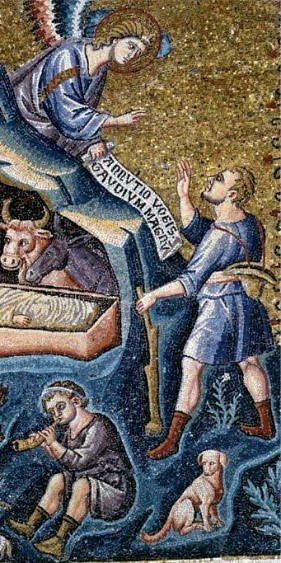
During the last decades of the Middle Ages we can observe the rise of a “tipo umano” (or new form of humanity). That spiritual strength, able to push the whole world to shake “itself free, shrugging off the burden of the past and cladding itself everywhere in a white mantle of churches”11, slowly vanished and a new era began. Using the words of St. Paul, we could say that, from the end of the Middle Ages, people started to think on what is on earth, not on what is above. A revolution that led to drastic changes in every branches of human knowledge: from philosophy to astronomy, from poetry to music.
It was a severe blow for the bagpipes. Their solid sound, driven by a strong fixed drone, so suitable for the monophony and early polyphony of the Middle Ages, and their aptitude to produce an infinite phrasing, became incompatible with the new taste and musicians preferred to replace them with shawms.
Bagpipes escaped to the countryside, far away from art music of the big cities, going quite definitively into the folk music domain.
The Italian iconography supports this theory. After Late Middle Ages, it is quite impossible to find bagpipes representations in courtly or ceremonial scenes and angel bagpipers disappeared too.
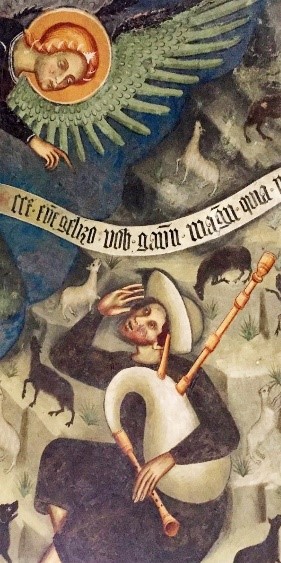
Bagpipes were portrayed mainly in rural settings, peasant feasts and played by shepherds at the adoration.
2.1 Naturalism in Art

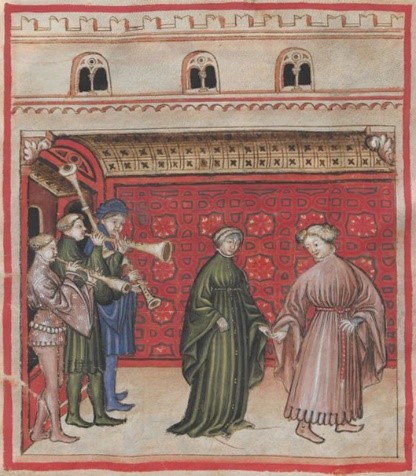
The iconography of these centuries is less interesting from a symbolic point of view but, sometimes, it is able to give us detailed information about instruments design and construction. The two paintings below are the most interesting to think concretely about instrument reconstruction.
The difference between this painting (Fig. 23) and all the previous ones is huge. Medieval adorations were a theological work, strictly pertinent to the Gospel of Luke; instead, this artwork by Jacopo da Ponte is almost completely humanised. Only the halo of the Virgin Mary calls to mind the mystery of the incarnation of Christ and no Angels descend from Heaven to announce the good news. On the other hand, the realistic details are incredible. The chanter and drone bell section (Fig. 24) are so well proportioned that it seems nearly possible to get a technical drawing. We can see that the 7th tone hole was drilled sideways for the right little finger, the diameter of the 5th tone hole is adequate for a major third and the 2nd tone hole was a little bit lowered, maybe to tune a good minor sixth by cross fingering. Clearly, these are only suppositions but the precision of the painter is outstanding.


Unfortunately, it is not possible to see the thumb hole and the vent holes on the bell to guess if the last note was a half-step or a full step under the tonic note. Moreover, it would be good if we could see the drone bell better to understand if it was completely open or partially closed. A quick glance at the reeds would be nice… and at inner bores too!
The second example (Fig. 25) is an interesting discovery for this group, a little-known painting with an astonishing bagpipe depiction quite similar to Fig. 23.

2.2 Piva and Baghèt

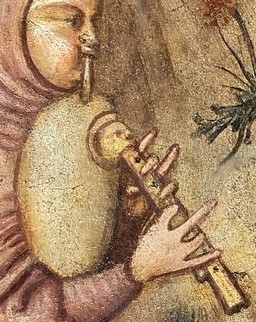
To conclude this article, I would like to share another couple of pictures. They are quite an interesting connection between Italian iconography and folk bagpipes. In northern Italy, we have 3 types of bagpipes which survived until the beginning of the 20th century. The Müsa (see the article by Daniele Bicego on Chanter spring 2020), the Baghèt (see the article by Carlo Musitelli on Chanter autumn 2020) and the Piva dal Carner, a traditional bagpipe from the Apennines, near Parma.
During the 17th century, the painter Monsù Bernardo worked a lot in Italy, travelling between Bergamo, Venice, Ferrara and Rome. Born in Denmark, he moved to Italy as many north European painters did in those years, introducing their tradition of depicting peasant scenes or subjects as thieves, gamblers, prostitutes and beggars. On works attributed to Monsù Bernardo, the painter portrayed some bagpipers too, probably street musicians, and their instruments are exceptionally similar to the Piva dal Carner (Track D: Manfrine - degli Esposti, Piccioni.) and the Baghèt (Track E: Polca - Biella, Crotti, Rota) still played in Italy after 250 years.

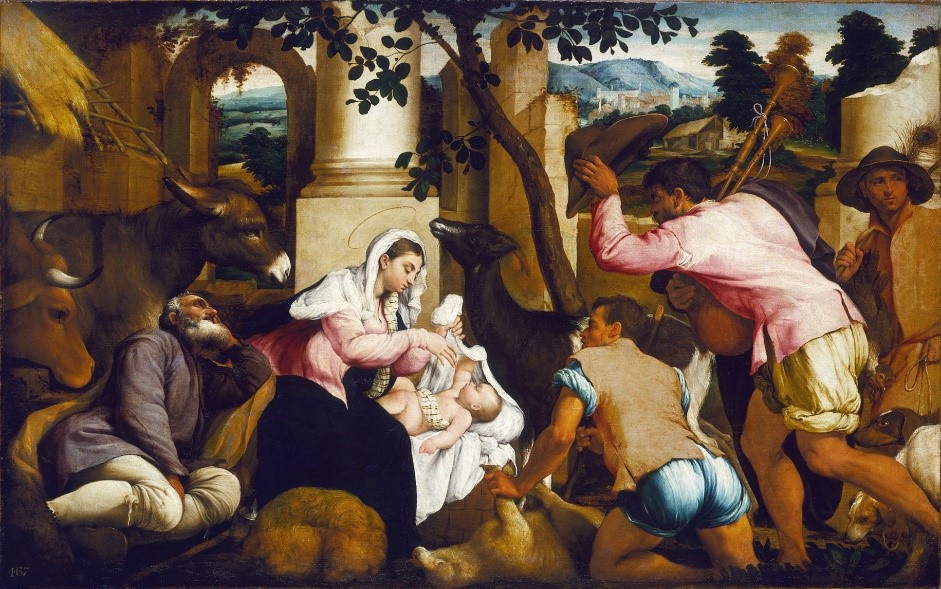
To make a comparison, you can see the photographs of the last traditional Piva and Baghèt players right next to the paintings.
We are at the end of our journey. It was a long story, with its highs and its lows, able to consign us a living musical instrument after so many centuries. I think that this vital energy derives from the enchanting drone sound. This musical element is a kind of contradiction: it brought the bagpipes away from the path of the great western music and, on the other side, it was able to last through the centuries as an unlimited source of inspiration. The development of the polyphony, the birth of the tonal music, the Schoenberg’s serial twelve-tone technique and all these changes marginalised the idea of a fixed note as a never-ending source of melody. Anyway, this drone sound is always able to quench our thirst as a glass of fresh water. As bagpipe player and tutor, I can see clearly the unquestionable sign of this vitality: the sign is a couple of eyes open wide and a smile when a well-tuned set of pipes strikes its first note.12 It is simple and deep. Listening that timeless drone, we can be sure that bagpipes are ready to carry on their path towards the future.
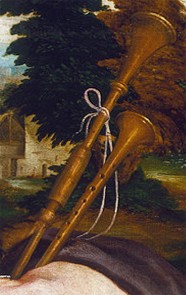
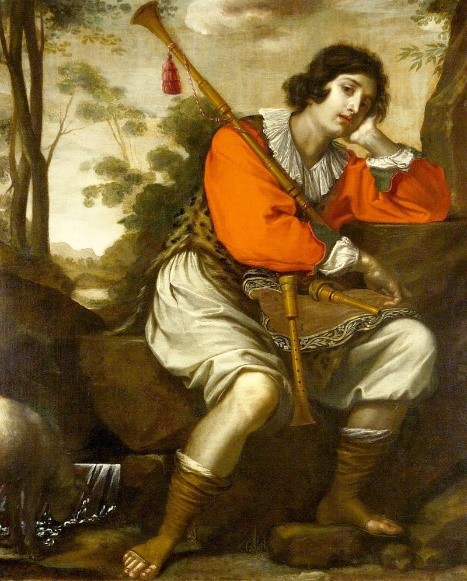

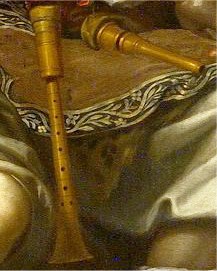
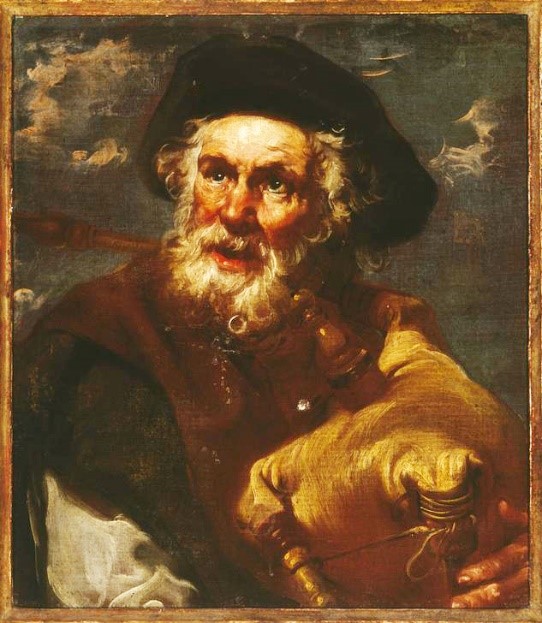
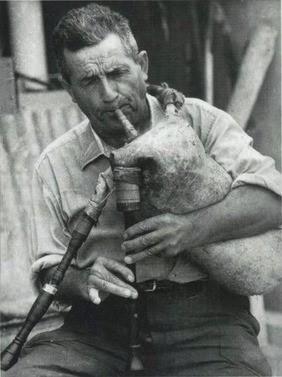

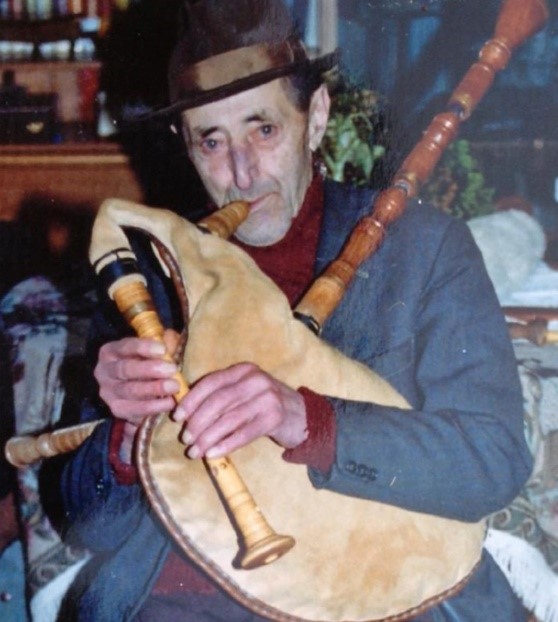
References
- https://www.facebook.com/groups/475904172841601/
- http://jeanluc.matte.free.fr/
- http://www.prydein.com/pipes/
- http://thebagpipemap.co.uk/
- (my translation) St. Dionysius, Περὶ τῆς Οὐρανίας Ἱεραρχίας, chapter VII, paragraph IV
- “The motion and the virtue of the holy spheres, even as the hammer’s art by the smith, must needs be inspired by the blessed movers” The Divine Comedy, Paradiso II 127-128, translated by C.S. Singleton, Princeton University Press
- “When the revolution which Thou, by being desired, makest eternal turned my attention unto itself by the harmony which Thou dost temper and distinguish” The Divine Comedy, Paradiso II 76-78, translated by C.S. Singleton, Princeton University Press. – “Temper and distinguish” is a technical expression. “Temper” is the action of tuning the strings and “distinguish” indicates the ability to understand the numerical proportions behind harmony as Pythagoras did.
- “l’amor che move il sole e l’altre stelle” La Divina Commedia, Paradiso XXXIII 145
- Fig. 15 taken from “Soffitti lignei in Friuli fra Medioevo e Rinascimento”, Francesco Fratta de Tomas, Silvana Editoriale, 2019
- The title will be “La bombarde à pavillon en forme de cloche dans l’iconographie du XIVe et XVe siècles”, supervisor Frédéric Billiet, author Raffaella Bortolini, Sorbonne Université, Paris
- “Erat enim instar ac si mundus ipse excutiendo semet reiecta vetustate, passim candidam ecclesiarum vestem indueret.” Rodulfus Glaber, Historiae, liber III, caput IV, 11th century, BNF lat.10912 f.26r
- There are also people who run away when they hear a bagpipe but we already know why (see paragraph 1.6)
- Data Processing Notice (GDPR)
-
@BagpipeSociety on X (formally known as Twitter)
-
TheBagpipeSociety on Instagram
-
 BagpipeSociety on Facebook
BagpipeSociety on Facebook
Something wrong or missing from this page? Let us know!
